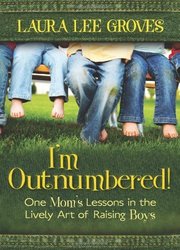Unity in a Divisive Age: Unity with Fellow Believers
In this divisive age, even Christians find themselves at odds with each other.
Dietrich Bonhoeffer’s words in Life Together encourage and challenge believers to consider their unity in spite of differences. In Part 1 of this series, we considered the believer’s oneness with Christ. Today we’ll be challenged by Bonhoeffer’s thoughts on unity with fellow believers.
John W. Doberstein calls Bonhoeffer one who:
is close to contemporary life and sensitive to reality;
sees the way of discipleship and walks it to the end.
To be in unity with fellow believers, we must be as Bonhoeffer – aware of both contemporary life and reality, living and walking the way of the disciple.
The Believer’s Unity with Fellow Believers
We’re united with the believers around us and even around the world through our common belief in Jesus Christ. He died to gather us to him.
We are one with Christ, joined to him, but we create divisions when we place ourselves above others.
Bonhoeffer exhorts us to consider ourselves “the greatest of sinners” (96). This enables us to communicate effectively to one another, as we “speak to one another on the basis of the help we both need” (106).
We have a shared state with our fellow believers – we are saved not by our own efforts, but through the grace of God. This admission of our shared state not only levels the playing field but lends hope as we realize that, though fallen, we may “share in God’s grace and glory and be God’s child” (106).
As Christians in America, we assume so much, often taking for granted the believers around us, overlooking opportunities for local ministry.
We so easily take for granted the opportunity for Christian community in America. Bonhoeffer reminds us that it is “by the grace of God that a congregation is permitted to gather visibly in this world” (18).
In thankfulness for that grace, we are called to engage in its ministry among us.
Bonhoeffer reminds us of this ministry to one another as he writes that “the Christ in [a believer’s] heart is weaker than the Christ in the word of his brother” (23). As we speak his Word into each other’s lives, united by our need and by our ministry to one another, “through Christ, we have one another, wholly, and for all eternity” (26).
Our unity with fellow believers transcends time and place.
Bonhoeffer paints a thrilling picture of unity with fellow believers that transcends time and place. As we read scripture, “we become part of what once took place for our salvation” (53).
Bonhoeffer writes that we, in our modern lives, pass through the Red Sea and into the desert, falling into doubt, and are punished and repent. Through the reading of God’s Word, “we are torn out of our own existence and set down in the midst of the holy history of God on earth” (53).
We become one with the Body of Christ across the ages, singing an earthly song of “pilgrims and wayfarers upon whom the Word of God has dawned to light their way” (58).
Christ’s work for us links with the experience of believers from the pages of scripture and the believers we stand with today, teaching us about another unity – the unity of lives that are hidden in Christ.
If we’re thankful for a unity with fellow believers that is humble and necessary, that transcends time and place, our time is better spent looking for what unites us than what divides.
In an era that requires living life out loud and online for all to see, what merit can come from being hidden in Christ? We’ll consider Bonhoeffer’s thoughts on the unity of a life hidden in Christ in Part 3.







Let’s Connect Here!
Click the icons to go to my social media profiles and let's get connected.